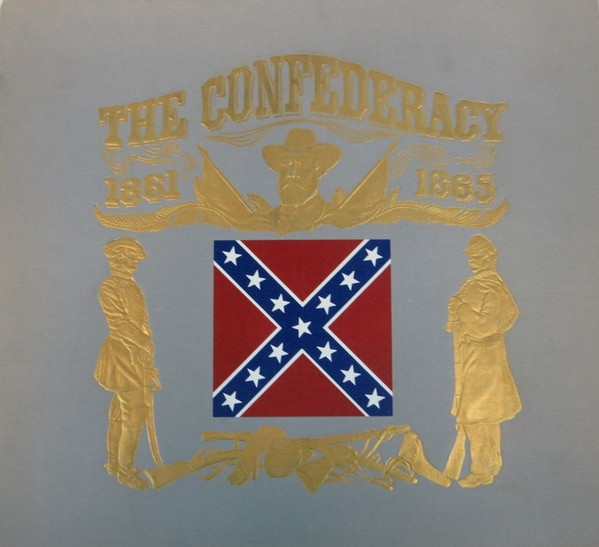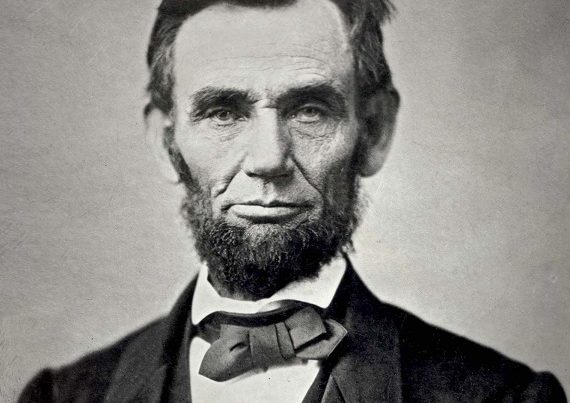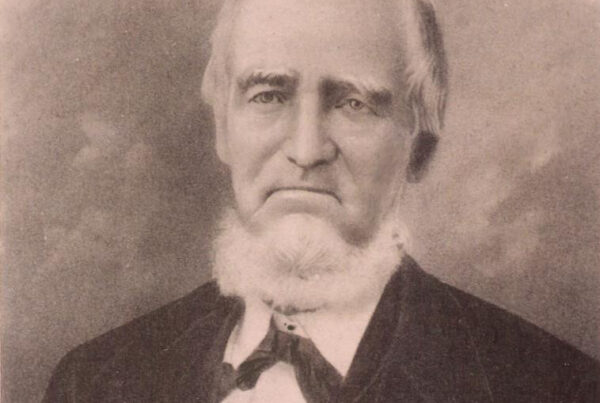A while back, some of the folks at Abbeville Institute turned out a fine anthology of the greatest Southern rock melodies of the present day. Music, of course, like most everything else, changes with the times and there were other golden eras for country music that gave the listeners of their day a far different sound and put them in a much different mood.
No one knows this better than Joe Bussard of Frederick, Maryland, whose roots in that state date back to the Eighteenth Century. Bussard is a celebrated Southern music authority who has compiled what is considered to be the largest private collection of original 78 RPM records from the 1920s, ‘30s and ‘40s. His more than twenty thousand record library consists of not only country music from those bygone eras, but Southern blues, gospel and jazz melodies from the same periods.
Bussard formerly ran America’s last 78 RPM record label, “Fonotone,” and currently produces the weekly “Country Classics” program for Georgia Tech’s student radio station WREK in Atlanta, as well as similar programs on radio stations in Maryland, North Carolina and West Virginia. He was also the subject of the 2003, award-winning documentary “Desperate Man Blues.”
In that documentary, Bussard expressed his utter distaste for today’s country music and termed the “Music City” of Nashville as “Trashville.” As for rock music itself, he stated that he considered it to be “a cancer that has destroyed American music.” Bussard also had some particularly harsh words for that genre’s performers who he said were “idiots who can’t even play their instruments well, have to use electronic gimmickry to hide their incompetence and have no knowledge of the music of the past.”
Rolling the rock of controversy to one side, let us move on to the interim period of the 1950s, a time when I was spinning 78 RPM country music records on a radio morning show in upstate New York. In those years I called myself “Johnny Reb” for the program and played a string band rendition of “Dixie” as my theme song . . . and never drew a word of complaint. It was a time that has long since past when one could openly enjoy the recreated music of the antebellum South and even that of the Confederacy without having to worry about being ostracized by public opinion and tarred with the racist label.
At that more gentle time in America’s past, rock music was still in its infancy, with tunes like “We’re Gonna Rock Around the Clock Tonight” by Bill Haley and the Comets just beginning to hit the music charts. The king of rock and roll, Elvis Presley, did not have his first successful record until 1954, and that was not even rock and roll, but the1946 blues song, “That’s All Right.”
In those years, the whole country music scene was made up of great songs like Hank Williams’ “Your Cheatin’ Heart,” Johnny Cash’s “I Walk the Line,” Kitty Wells’ “It Wasn’t God Who Made Honky Tonk Angels,” Hank Snow’s “I’m Movin’ On” and Eddie Arnold’s “I Wanna Play House With You,” with many of them hitting the Top Ten lists nationwide.
The 1950s also saw Mitch Miller’s recording of the popular Confederate song “The Yellow Rose of Texas” rise to number one on “Billboard’s” 1955 list of hit songs and remain there for six weeks. Miller’s record, with slightly less racial lyrics than the original 1850s version, even had a rousing instrumental rendition of “Dixie” on the reverse side that was almost as popular. Miller’s main hit tune also became number one in Australia that year and was number two in the United Kingdom.
A decade later, the Canadian/American rock group “The Band” recorded “The Night They Drove Old Dixie Down,” a song that today would be considered by far too many as little more than a politically incorrect tribute to the Lost Cause. The song was written in 1968 in Woodstock, New York, by Canadian composer “Robbie” Robertson and “The Band’s” drummer and lead singer, Levon Helm, who hailed from Arkansas.
The lyrics relate the reminiscences of a Confederate named Virgil Kane who worked on the Virginia & Tennessee Railroad in 1865 and how his “proud and brave” eighteen year old brother had taken “a rebel stand . . . but a Yankee laid him in his grave.” Kane’s sad but still defiant words tell of the destruction by General George Stoneman’s Union Cavalry of the rail line that carried supplies to Richmond and the overall destruction of the South in the closing days of the War. The song was listed in such publications as “Time” and “Rolling Stone” magazines, as well as by the “Rock and Roll Hall of Fame,” as one of the greatest hits of all time. Ten years later, the song was recorded again by Joan Baez, and that version rose to among the five top hits of 1971.
In addition to single records from the 1950s, ‘60s and ‘70s with a Confederate theme, the major recording companies also produced a number of wonderful albums during that period that were devoted to music from the War of Secession. These were made up of either Southern melodies alone or those that presented music of both the Confederacy and the Union. Among the latter were Decca’s “Songs of the North and South” sung by Zora Layman and Frank Luther, as well as Mercury’s “Songs of the Blue & Grey” performed by The Wayfarers Trio.
While Stephen Foster is mainly regarded as a composer of Southern music, with the majority of his most popular songs having a Southern theme, he showed his Yankee heritage during the War by writing a few, now rarely performed, pro-Union melodies. In 1972, Nonesuch records produced an album of Foster’s songs which ranged from the 1840s to one of his last melodies that was published after his death in 1864, “Beautiful Dreamer.”
The songs were sung by Jan DeGaelani and Leslie Guinn, with accompaniment on period instruments from the Smithsonian Institution. Among the selections were two Union war songs from 1862, “Was My Brother in the Battle” and “That’s What’s the Matter.” A third song, “I’m Nothing But a Plain Old Soldier,” from 1863 was, however, a rather sarcastic jab at the Union’s string of military defeats up to that time.
Mercury also produced a magnificent, two-volume collection, “The Civil War – Its Music and Its Sounds” by Frederick Fennel and the Eastman Wind Ensemble. The first album featured Confederate and Union band music played on actual instruments from the period, as well as a narration by actor Martin Gabel of the events from Fort Sumter to Gettysburg, with the sounds of contemporary small arms and cannons being fired on the field at Gettysburg. The second album contained not only more field music from both sides, but a collection of Confederate and Union songs and a continuation of Gabel’s narrative relating the events from Gettysburg to Appomattox. Among the major-label albums from that period which were devoted only to the South were Capital’s “Civil War Songs of the South” by Tennessee Ernie Ford and Columbia’s antebellum “Songs of the South” by the Norman Luboff Choir.
The greatest contribution to Southern heritage and history though was Columbia’s 1958 album “The Confederacy” by Richard Bales and the National Gallery Orchestra. Besides the recordings themselves, the album also contained a thirty-two page booklet featuring essays by historians Bruce Catton and Clifford Dowdey, as well as a number of excellent wartime illustrations.
As to the recording, the album began with the original score of “General Lee’s Grand March” and then continued with vocal renditions of “All Quiet Along the Potomac Tonight,” “The Bonnie Blue Flag,” “Lorena,” The Yellow Rose of Texas,” “Somebody’s Darling,” “We All Went Down to New Orleans For Bales” and “The Conquered Banner,” all as they would have been sung by Southerners in the 1860s. The record concluded with perhaps one of the most resounding vocal presentations of “Dixie” of all time, one that included an interlude of “Year of Jubilo” and ended with a rousing Rebel yell. Also included on the record was a reading of General Lee’s farewell to the Army of Northern Virginia at Appomattox by the Reverend Edmund Jennings Lee, whose great grandfather was General Lee’s uncle.
Some of the above music can still be found today online or in retro record stores in their original LP formats or transcribed to CDs, as well as a few on YouTube videos. A small number of brave souls even still continue to pay tribute to the noble heritage of both the South and the Confederacy by producing a limited amount of such music on CDs and videos.
It is to be feared though that while some of the music of the old South and the Confederacy may still be heard, the present anti-Confederate craze will continue the effort to either “contextualize” such music beyond recognition or even deny it from public hearing altogether, as well as to end any production by major recording companies. Sadly, just as it now applies to Confederate monuments and all else that honors that era of American history, the music attached to the history of the old South and the Confederacy is also becoming dimmer in America’s memory . . . and if the growing cancel-culture sentiment in regard to such American history has its way, that memory will soon become erased entirely.
Note: The views expressed on abbevilleinstitute.org are not necessarily those of the Abbeville Institute.







If not for the south, American music would just be some guy playing a flute. The music “industry” is of course, a Yankee institution.
I.E. “VICTOR”, “CONQUERER”, “DOCUMENT” records, etc…, talk about sore winners, or the children of.
Southern music, real music…
how about them GEORGIA YELLOWHAMMERS, Dock Boggs, Clayton McMichen, Gid Tanner and The Skillet Lickers, Hoyt Ming, Riley Puckett and Uncle Dave Macon, just to name a few…
Memphis jug band, GUS CANNON’S JUG STOMPERS and MISSISSIPPI SHEIKS.
While enjoying the music, it’s hard to tell who’s white and who’s black, but SURE AS YOU’RE BORN, you can tell it’s SOUTHERN…..
Cancer-culture is only partly to blame. Tastes and values change. Cultures change. Take for example the decline of farming. Large farms are only partly to blame. Fact is most people don’t like to do farm work. It requires a real love for farming and that way of life. I don’t listen to any of the 70’s music I heard all the time on the radio on the farm. Now I try to sing the Psalms of the Bible when I work. All the vinyl records could be melted but never do I want to lose the Psalms. I think that men like Thornwell would agree with me.—Ken
Speaking of “The Night They Drove Old Dixie Down” – and taking nothing away from Levon Helm’s excellent effort – the very best version of the song I’ve heard was on an album by The Buckaroos, Buck Owens band (without Buck). I don’t know which band member sang it, but you can hear the pain in their voice. Sorry, but I don’t recall the name of the album and it’s very hard to find The Buckaroos version of the song.